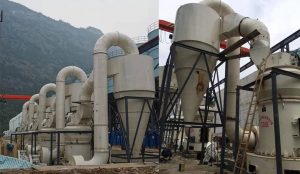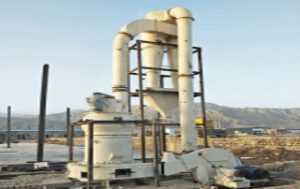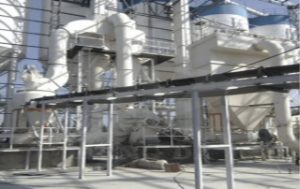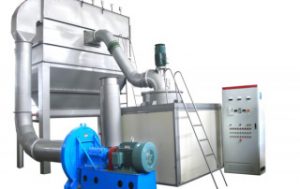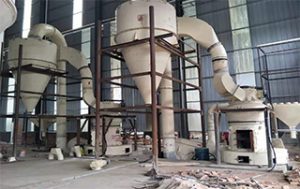Nickel ore refers to the ore containing nickel element or nickel compound, which can be beneficiated into nickel concentrate or nickel ore sand with high nickel grade. Nickel concentrate can become refined nickel and nickel products only after smelting Commission. The content of nickel ore in the earth’s crust is 0.018%. The main minerals of nickel ore include nickel pyrite [(Ni, Fe) 9s8], silicon magnesium nickel ore [(Ni, Mg) SiO3 · nH2O], needle nickel ore or yellow nickel ore (NIS), red nickel ore (Nias), etc.
Nickel is a silvery white metal, melting point 1455 ℃, boiling point 2730 ℃, density 8.90 g / cm3. Ferromagnetic and malleable, conductive and thermally conductive. At room temperature, nickel forms a dense oxide film on the surface in humid air, which can not only prevent further oxidation, but also resist the corrosion of alkali and salt solution. Massive nickel will not burn, fine nickel wire is combustible, and special small porous nickel particles will spontaneously ignite in the air. When heated, nickel reacts violently with oxygen, sulfur, chlorine and bromine. Fine powdered metal nickel can absorb a considerable amount of hydrogen when heated. Nickel can slowly dissolve in dilute hydrochloric acid, dilute sulfuric acid and dilute nitric acid, but its surface is passivated in fuming nitric acid. The oxidation state of nickel is – 1, + 1, + 2, + 3, + 4. Among the simple compounds, the + 2 valence is the most stable, and the + 3 valence nickel salt is the oxidant. The oxides of nickel are NiO and Ni2O3. Nickel hydroxide [Ni (OH) 2] is a strong base, slightly soluble in water and easily soluble in acid. Nickel sulfate (NiSO4) can form alum Ni (SO4) 2 · 6H2O (MI is alkali metal ion) with alkali metal sulfate+ Divalent nickel ions can form coordination compounds. Under pressure, nickel and carbon monoxide can form nickel tetracarbonate [Ni (CO) 4], which will decompose into metal nickel and carbon monoxide after heating.
1. Copper nickel sulfide ore dressing
This type of ore is mostly magmatic separation copper nickel ore, in which the rich ore containing more than 3% nickel can be directly smelted; Ore with nickel content less than 3% needs beneficiation.
(1) Mineral composition and beneficiation method of copper nickel sulfide ore
The common metal minerals in this kind of ore are pyrrhotite, pentlandite and chalcopyrite. In addition, there are magnetite, pyrite, ilmenite, chromite, chalcocite, chalcocite, bornite and platinum group minerals; Gangue minerals include olivine, pyroxene, plagioclase, talc, serpentine, chlorite, actinolite and mica, and sometimes quartz and carbonate.
Copper in copper nickel ore mainly exists in the form of chalcopyrite; Nickel mainly exists in the form of free nickel sulfide such as pentlandite, goethite and purple pentlandite. A considerable part of nickel exists in pyrrhotite as isomorphism, and there is a small amount of nickel silicate.
Flotation is the most important beneficiation method for copper nickel sulfide ore, while magnetic separation and gravity separation are usually auxiliary beneficiation methods.
2. Nickel oxide ore treatment
Nickel laterite in nickel oxide ore has high iron content and low silicon and magnesium content, with nickel content of 1 ~ 2%; Nickel silicate ore has low iron content and high silicon magnesium content, with nickel content of 1.6 ~ 4.0%. At present, the development and utilization of nickel oxide ore is mainly nickel laterite ore. Because nickel in nickel oxide ore is often dispersed in gangue minerals with isomorphism and fine particle size, it is difficult to obtain good results by mechanical beneficiation. After roasting and changing the mineral structure, although better technical indexes can be obtained, the cost is high and has not been used in industrial production.
At present, nickel oxide ore is mostly treated by crushing, screening and other processes to remove large bedrock ore blocks with weak weathering and low nickel content in advance, and the enrichment is relatively low. In recent years, due to the continuous development of nickel smelting technology, the increase of nickel consumption and the continuous reduction of nickel sulfide rich ore resources, the development and utilization of nickel oxide ore has attracted more and more attention. Nickel oxide deposits are generally shallow buried and suitable for large-scale open-pit mining, as well as selective mining. Due to the low mining cost, it has certain competitiveness compared with nickel sulfide ore.


